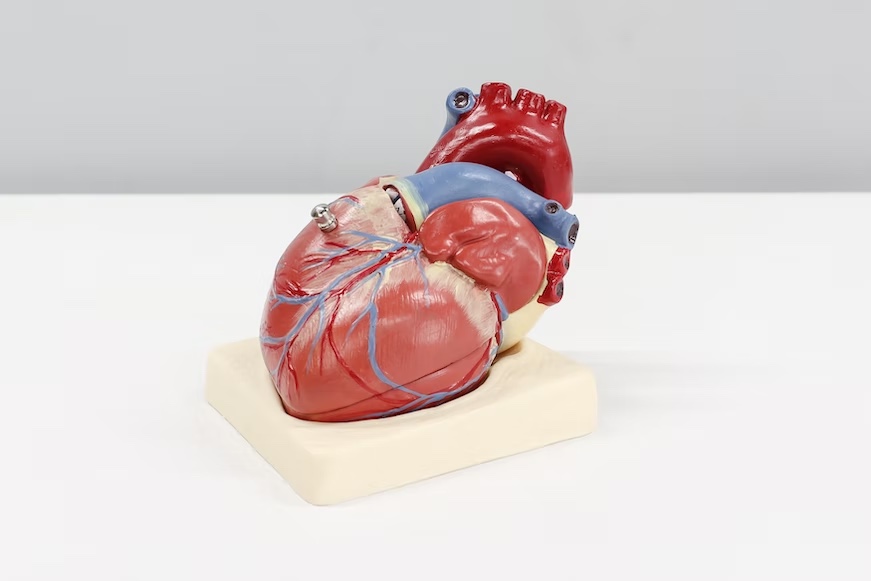An aneurysm is caused when an artery is enlarged due to a weakening of the arterial wall. An aneurysm can form a bulge or a distention (swelling) of the artery.
There are two kinds of an aneurysm as defined by their form:
- Fusiform aneurysms – which bulge on all sides of a blood vessel
- Saccular aneurysms – which bulge on one side of a blood vessel
Aneurysms become particularly dangerous if they are at risk of rupturing. Internal bleeding is the result of a ruptured aneurysm; a highly dangerous occurrence which can have fatal consequences. Aneurysms that consist of larger bulges are at a higher risk of rupturing than smaller ones.
Aneurysms are most commonly found in the following areas:
- The brain
- The aorta (the body’s main artery)
- The legs
- The spleen
Aneurysms effecting the brain or the aorta are the most dangerous; the aorta is the main artery which carries blood from the heart throughout the body.
What Are the Different Types of Aneurysm?
Abdominal Aortic Aneurysm
An abdominal aortic aneurysm is formed when the aorta, which carries blood from the heart to the abdomen, pelvis, and the legs, enlarges and forms a bulge as a result of arterial wall damage.
Abdominal aortic aneurysms are particularly dangerous, with a survival rate of around 20% in the occasion of a ruptured aneurysm.
Symptoms may include:
- Sudden, intense and persistent abdominal or back pain, which can be described as a tearing sensation
- Pain that spreads to your back or legs
- Sweatiness
- Clamminess
- Dizziness
- Nausea
- Vomiting
- Low blood pressure
Cerebral Aneurysm
A cerebral aneurysm is formed when the wall of a blood vessel in the brain enlarges and forms a bulge as a result of arterial wall damage.
Cerebral aneurysms effect around 5% of the population in the US.
As with abdominal aortic aneurysms, the rupturing of a cerebral aneurysm is highly dangerous. A ruptured brain aneurysm results in the leaking of blood into the brain, which is called a ‘subarachnoid hemorrhage’ which, in the most severe cases, can lead to coma.
Brain aneurysms may also cause bleeding in the brain itself, which is called a ‘hemorrhagic stroke’. Internal bleeding in the brain can cause serious damage to one’s brain function, or even prove fatal.
Symptoms may include:
- Severe headache
- Double vision
- Loss of vision
- Headaches
- Eye pain
- Neck pain
- Stiff neck
Thoracic Aneurysm
A thoracic aneurysm is when a bulge or swelling occurs on the portion of the aorta that passes through the chest. The most likely cause of a thoracic aneurysm is fatty deposits clogging the arteries (atherosclerosis).
Symptoms may include:
- Hoarseness
- Swallowing problems
- High-pitched breathing
- Swelling in the neck
- Chest or upper back pain
- Clammy skin
- Nausea and vomiting
- Rapid heart rate
The Centers for Disease Control and Prevention (CDC) advise that aortic aneurysms contribute to over 25,000 deaths in the United States (U.S.) each year. Further, around 30,000 brain aneurysms rupture in the U.S. each year. An estimated 40 percent of these cases cause death within 24 hours.
(Source: www.medicalnewstoday.com)
What Causes an Aneurysm?
- High blood pressure
- Injury or trauma
- Atherosclerosis
- Stress
- Smoking
- Fatty diets
- Obesity
- Pregnancy
- Infection
- Abnormal blood flow
- Hereditary
Aneurysms, as discussed, are the result of the weakening of the arterial wall. Arterial wall damage has a number of causes, including high blood pressure; arterial plaque build-up (atherosclerosis); physical trauma; abnormal blood flow and infection.
How Are Aneurysms Treated?
The way in which healthcare professionals are able to treat aneurysms is radically different as to whether they have ruptured or not.
Unruptured Aneurysms
Aneurysms that are at a low risk of rupturing are usually managed by monitoring and the administering of medication. Lifestyle changes such as quitting smoking (if applicable) and eating healthy foods are likely to be advised by healthcare professionals to patients with unruptured aneurysms.
If the risk of rupture is deemed to be significant, surgery will be necessary to repair an aneurysm. With regards to brain aneurysms, the process of surgery can be invasive and itself dangerous. For this reason, surgery is only resorted to when rupture seems likely.
Ruptured Aneurysms
Ruptured aneurysms may be treated using microsurgical clipping; this procedure works by blocking the blood flow using a metal clip.
Alternatively, endovascular coiling can be used to block the blood flow, which involves passing a catheter through the groin to the artery containing the aneurysm and releasing platinum coils that induce clotting; essentially blocking the aneurysm from blood flow.
A good health insurance policy will cover you in case of any occurrence of a medical emergency, including aneurysms. Visit us at MediCompare for more information on health insurance and how it can serve you.

